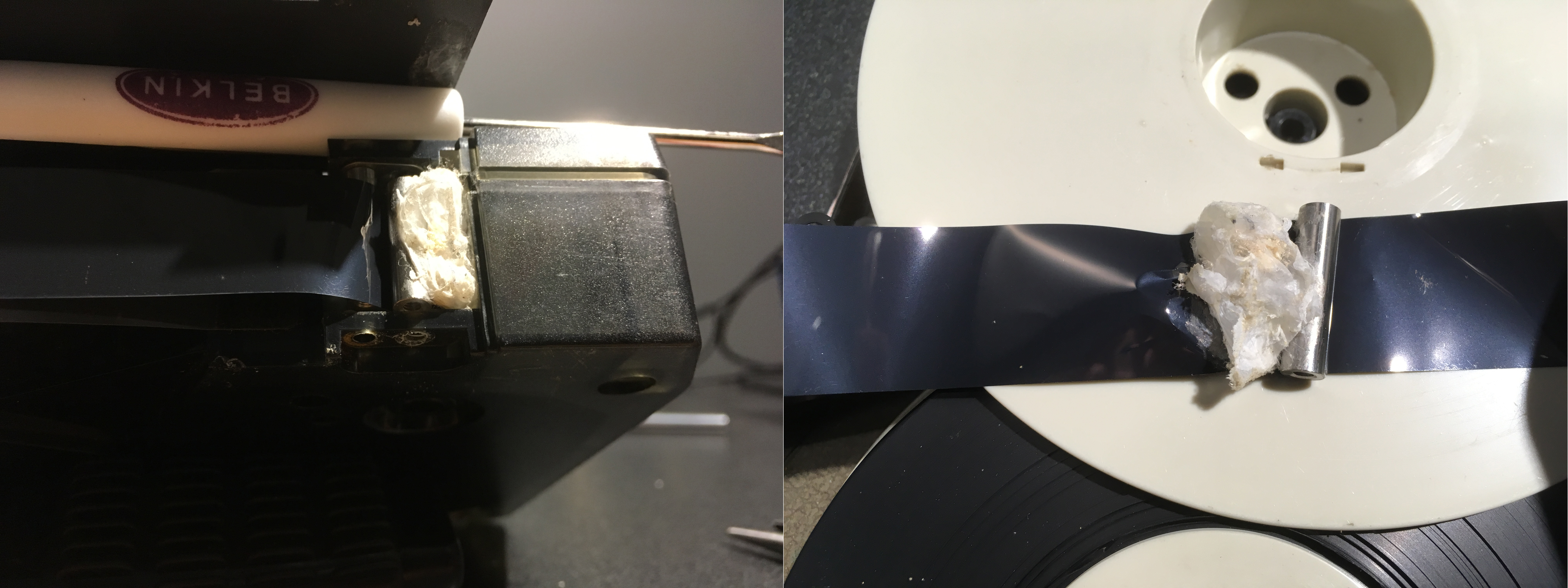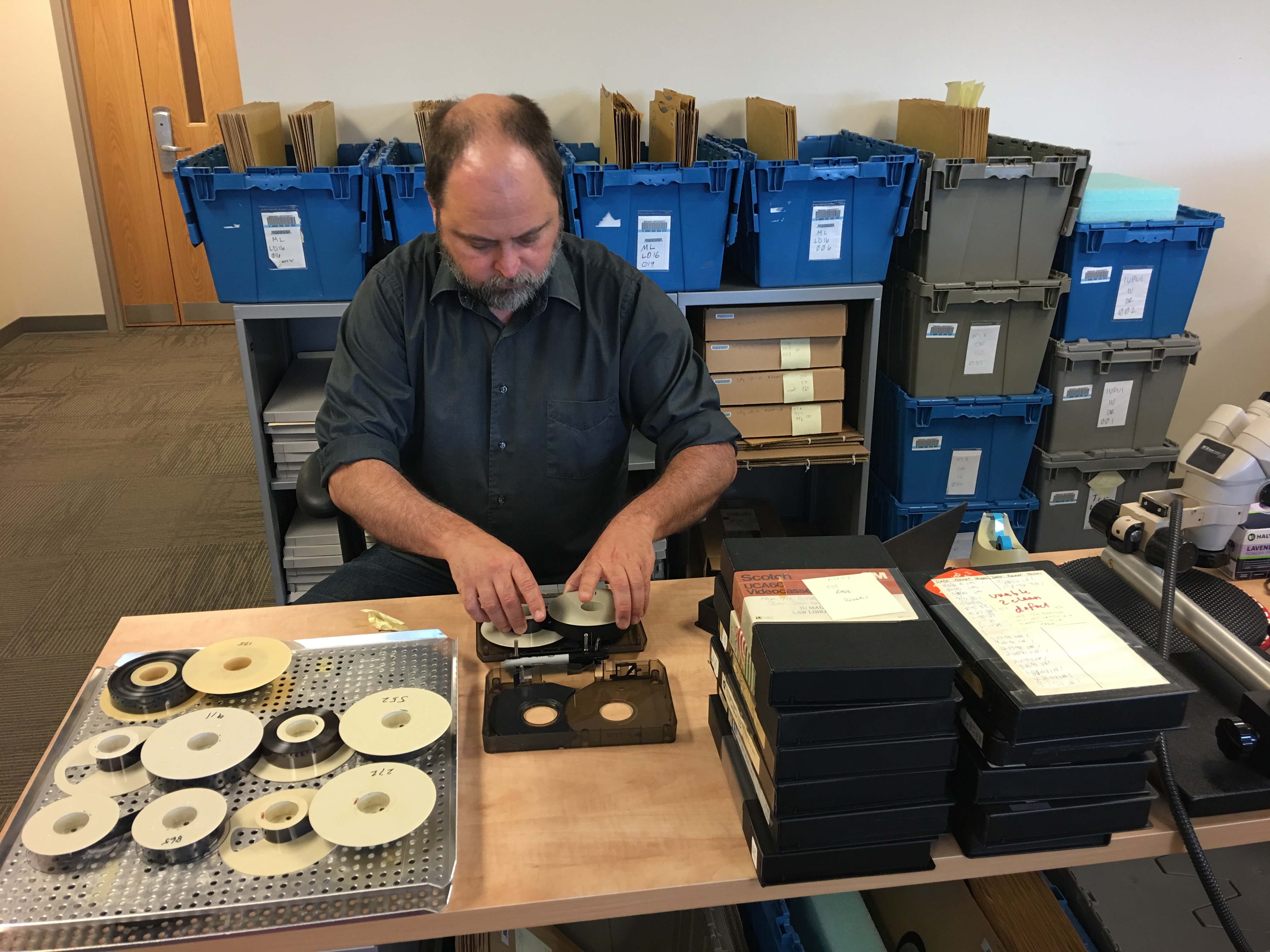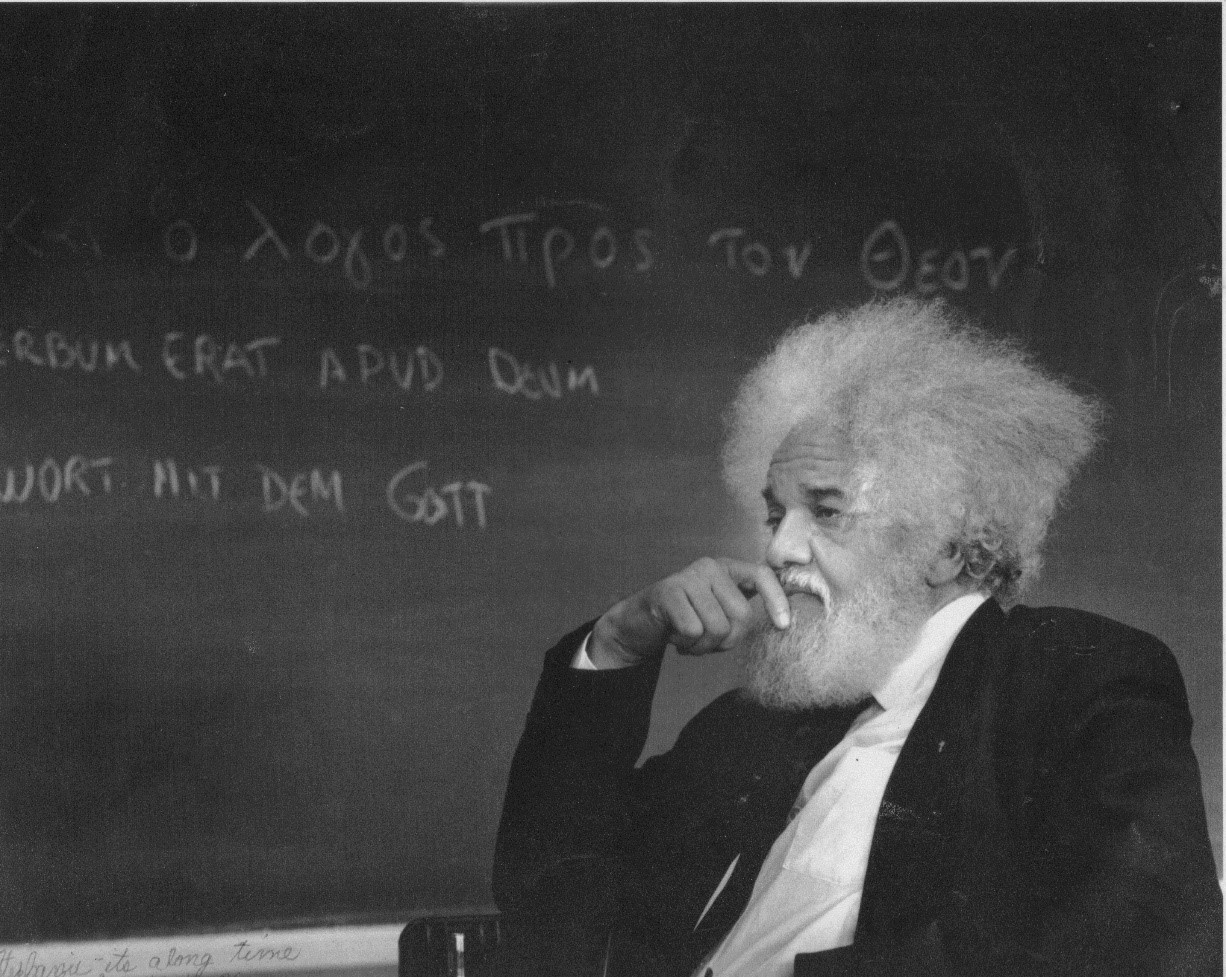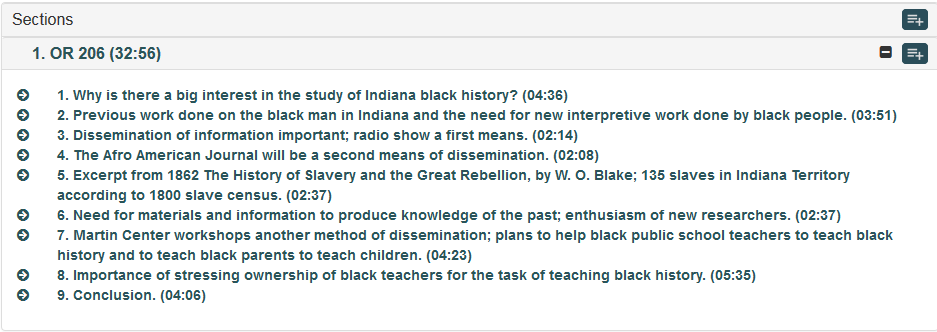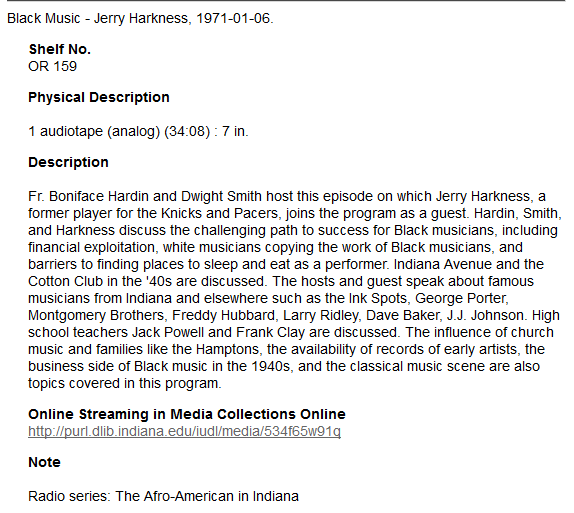by Dan Figurelli, Audio Preservation Engineer, Media Digitization and Preservation Initiative, Indiana University; Melissa Widzinski, Audio Preservation Engineer, Media Digitization and Preservation Initiative, Indiana University; and Jonathan Richardson, Audio Visual Specialist, Media Digitization and Preservation Initiative, Indiana University
Edited by Adam Nickel, Processing and Quality Control Specialist, Media Digitization and Preservation Initiative, Indiana University
The content of this post originally appeared as a presentation given at the 2017 Association for Recorded Sound Collections Conference.
In our time working at MDPI, we have come across a few wild things: unique media objects that presented interesting challenges. In Part One of this series we looked at some unusual items from open-reel tapes. For the second part of this series, we will look at interesting lacquer discs.
One of the more visually unusual discs that was discovered was this wild thing. It’s what we all refer to as the “golden disc.” For reasons unknown to us, the disc turned bright gold. If you look closely, the red arrows point to a definite boot print on it. The boot print can be somewhat explained, but the golden hue of the disc is still a mystery. The other side of the disc is blank but has not turned this golden color. Although the disc still has its grooves and is playable, we have set it aside until we decide the best way to digitize it.

There have been a number of odd examples in the realm of lacquer discs. We have seen a smattering of visually-strange examples, and a helping of sonically-strange examples. There have been lathe speed issues, stability issues, and cutting errors that have led to some pretty wild cases.

Although the label on this lacquer seemed to indicate that there was content and that it was the first side of a four-side concert recording, the disc was completely un-cut. Perhaps a mistake on the part of the recording engineer?
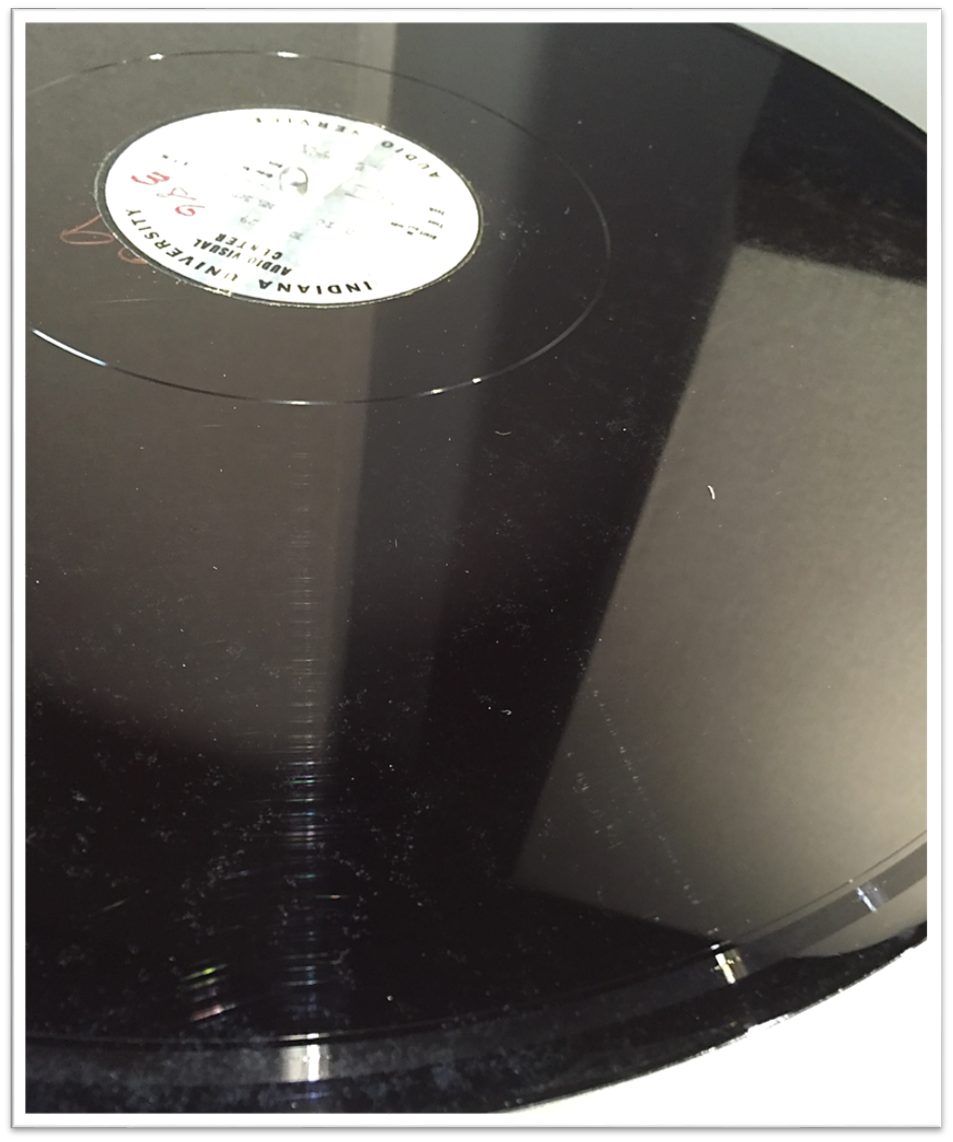
This 16″ disc from our School of the Sky Collection was used to record 15 seconds of content. Not very eco-friendly!

On the other end of the spectrum, another disc was found to have 35 discrete bands of content, all separated by locked grooves requiring manual stylus placement for each section. The content was all takes of a group of children singing “Skip To My Lou” for a film production. The kids would get going, sing a few seconds, then be cut off by the director.
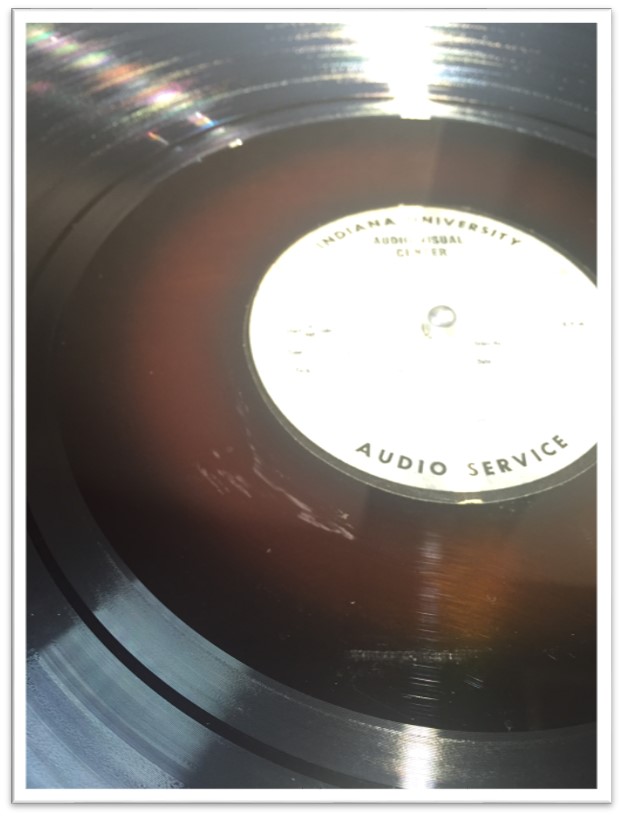
This disc has a mysterious orange halo which appears around the label area of the disc. This phenomenon appears somewhat frequently in the School of the Sky collection. Upon close examination, the halo area appears translucent and the aluminum core can be slightly seen underneath. Why something like this would occur, we don’t know. Many guesses were made but the only guess that seemed plausible is that it was a quality control issue by the blank disc manufacturer.
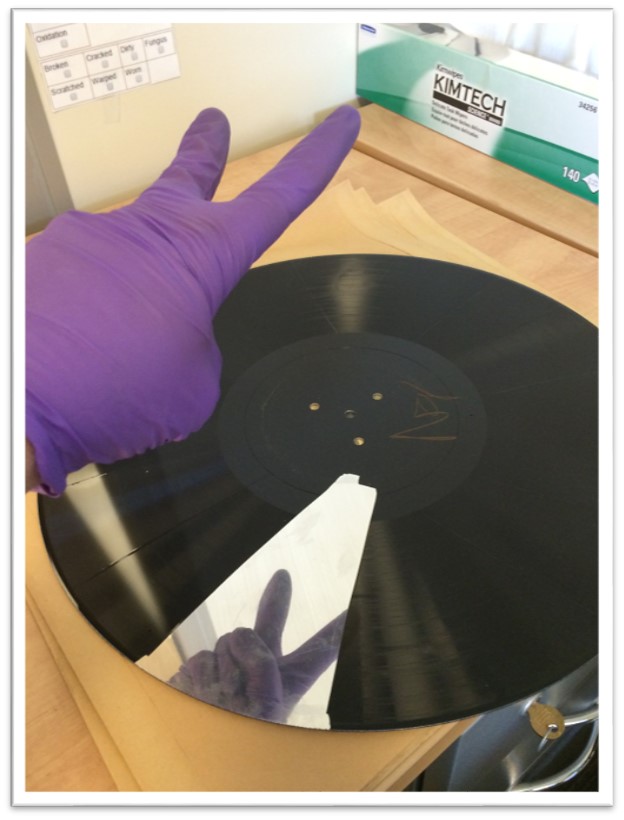
This disc is what we refer to as the “pizza disc.” Our speculation is that someone—perhaps the lathe operator or, most likely, the music performer—did not want this side of the record to be heard, so they scratched lines into the record. At some point in the disc’s life, a “slice” of the lacquer material fell off leaving a reflective area where the lacquer once was. The piece was not in the original sleeve with the disc so the audio was unfortunately irretrievable, at least for now.
Then there are the oddities that you don’t discover until you actually play the disc.
Simultaneous content is commonplace to hear on tape when playing back content on the wrong playback head. However, it is a lot more uncommon to find content from two separate programs playing simultaneously on a lacquer disc.The violin recital was the intended content, but somehow a good amount of an opera performance entered the signal. It is possible this was originally recorded on tape and transferred later to disc.
Another more commonplace tape issue is backwards content, but it is quite unlikely on lacquer disc. Backwards content was found at the end of this organ recital.
Speed changes are also commonplace on tape but less frequently found on discs. The content on this disc slowed down, sped up, then repeated content, all while playing back at a consistent speed. The repeats were cut into the groove.
We hope you enjoyed seeing and listening to some of our many wild things as much as we enjoyed digitizing them. Dan and Melissa will have a new presentation at the upcoming 2018 ARSC Conference on our cylinder digitization project. Hope to see you there!




